Implementing a design thinking approach to foster integration between refugees and locals.
Responsabilities: Conceptualization, project leadership, prototyping, production, workshop facilitation, research & strategy, documentation
Sector: Cultural mediation
Role: Design strategist
Client: Consortium of Museums of the Valencian Community
Duration: 9 months
Valentia is a speculative micronation that inspires creative solutions to immigration challenges.
BACKGROUND
Valencia’s port provided shelter to more than 600 immigrants stranded in the Mediterranean, igniting discussions about immigration’s profound impact. Engaged by the Consortium of Museums of the Valencian Community, we embarked on a cultural mediation initiative.
This project was designed to foster integration between refugees and locals, delving into the complexities of national identities. Our aim was to explore how these identities shape diverse cultures, and facilitate local integration.
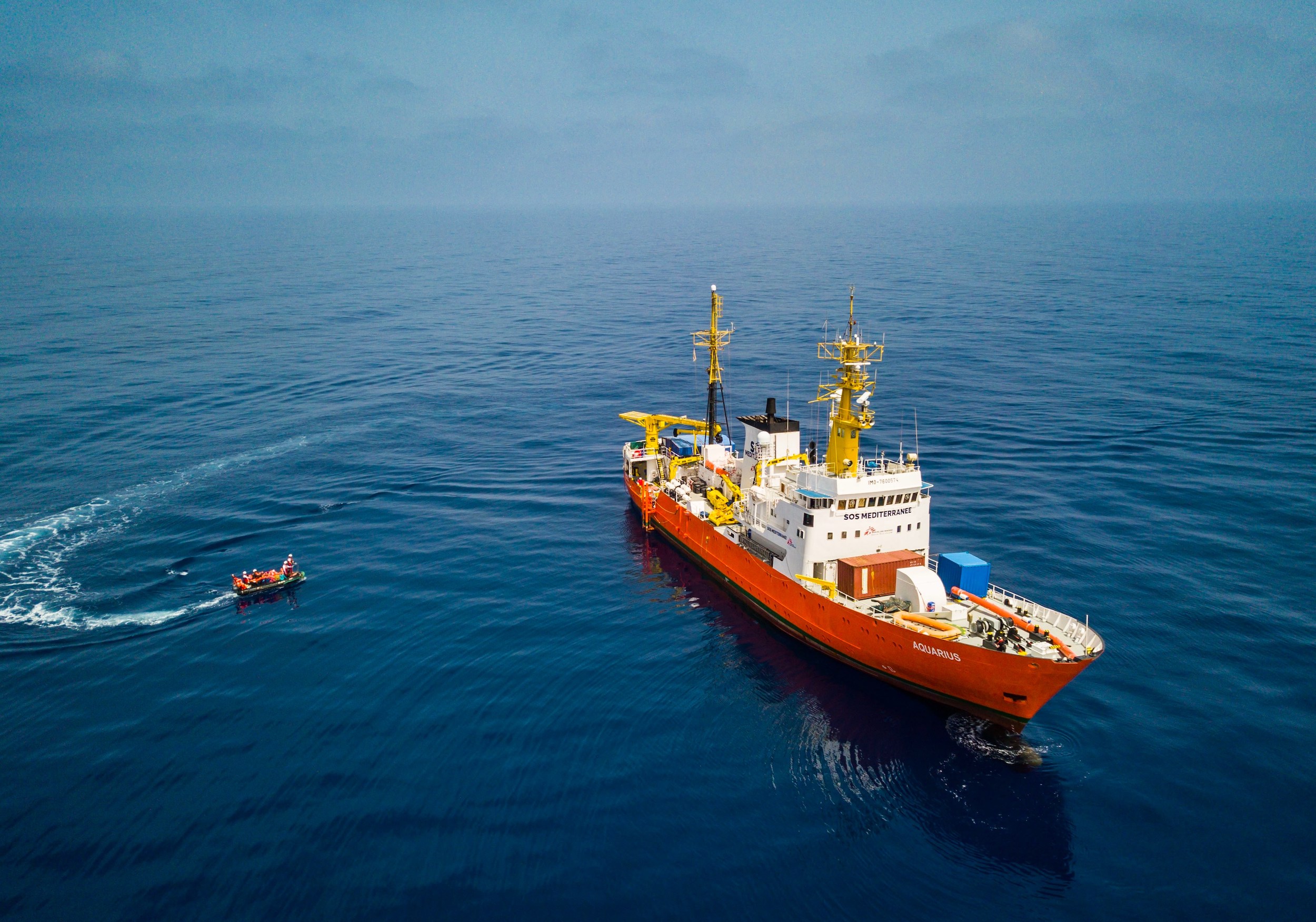
SOS Mediterranee NGO members aboard ‘Aquarius’ vessel rescued 600+ migrants in the Mediterranean, April 2018. © SOS Mediterranee
APPROACH
To tackle the intricate and significant themes of the project, we took a speculative approach. We initiated an exercise in foresight, starting with the question: “What if we could create a new nation today that could effectively respond to the challenges of contemporary mass migrations?”.
This concept gave rise to “Valentia,” conceived as a temporary micronation. Thus, the symbolic full name of our project became “Valentia, the birth of a micronation.”
PROCESS
1. Research & Findings
2. Ideation & Prototyping
3. Testing & Validation
4. Documentation & Reporting
1. Research & Findings
During the initial research phase, a series of interviews were conducted in collaboration with civil servants from the Commission for Aid to Refugees in the Valencian Country (CEAR) to gain insights into migration-related challenges in Valencia. Through interviews with 10 individuals, three distinct personas were identified: locals, refugees, and children.

Persona 1: Locals
“They come here wanting to impose their customs instead of adapting to ours.”
Name: Carmen Sánchez
Age: 65
Education: Bachelor’s in Business Administration
Hometown: Valencia, Spain
Family: Married with three grown-up kids
Occupation: Retired administrative assistant
Goals: Seeking a sense of security in the place she has always called home.
Frustrations: Carmen perceives rapid changes in her city and country, with an influx of new residents and businesses. This cultural shift has made her feel displaced and uneasy, impacting her sense of safety. The rise in crime rates adds to her anxiety.
Brief story: Carmen, having lived her whole life in Valencia, cherishes the familiarity and traditions of her hometown. However, recent changes have made her feel disconnected and concerned about the shifting dynamics impacting her sense of belonging and security.

Persona 2: Refugees
“People assume we chose to come here. We’re here because we had no choice.”
Name: Luis Hernández
Age: 38
Education: Bachelor of Laws
Hometown: Caracas, Venezuela
Family: Married with one daughter
Occupation: Currently unemployed
Goals: His main aim is to secure a job and stable accommodation to establish roots (arraigo) in Spain, which is crucial for legal residency.
Frustrations: Despite his legal background, his qualifications aren’t recognized in his new environment. He faces challenges in job hunting due to a lack of connections or network in the city.
Brief story: Luis was born and raised in Caracas, Venezuela, where he practiced law and owned a home. However, due to unforeseen circumstances and potential threats, he had to abruptly leave the country with his wife and daughter. He has been in Spain for 6 months now.
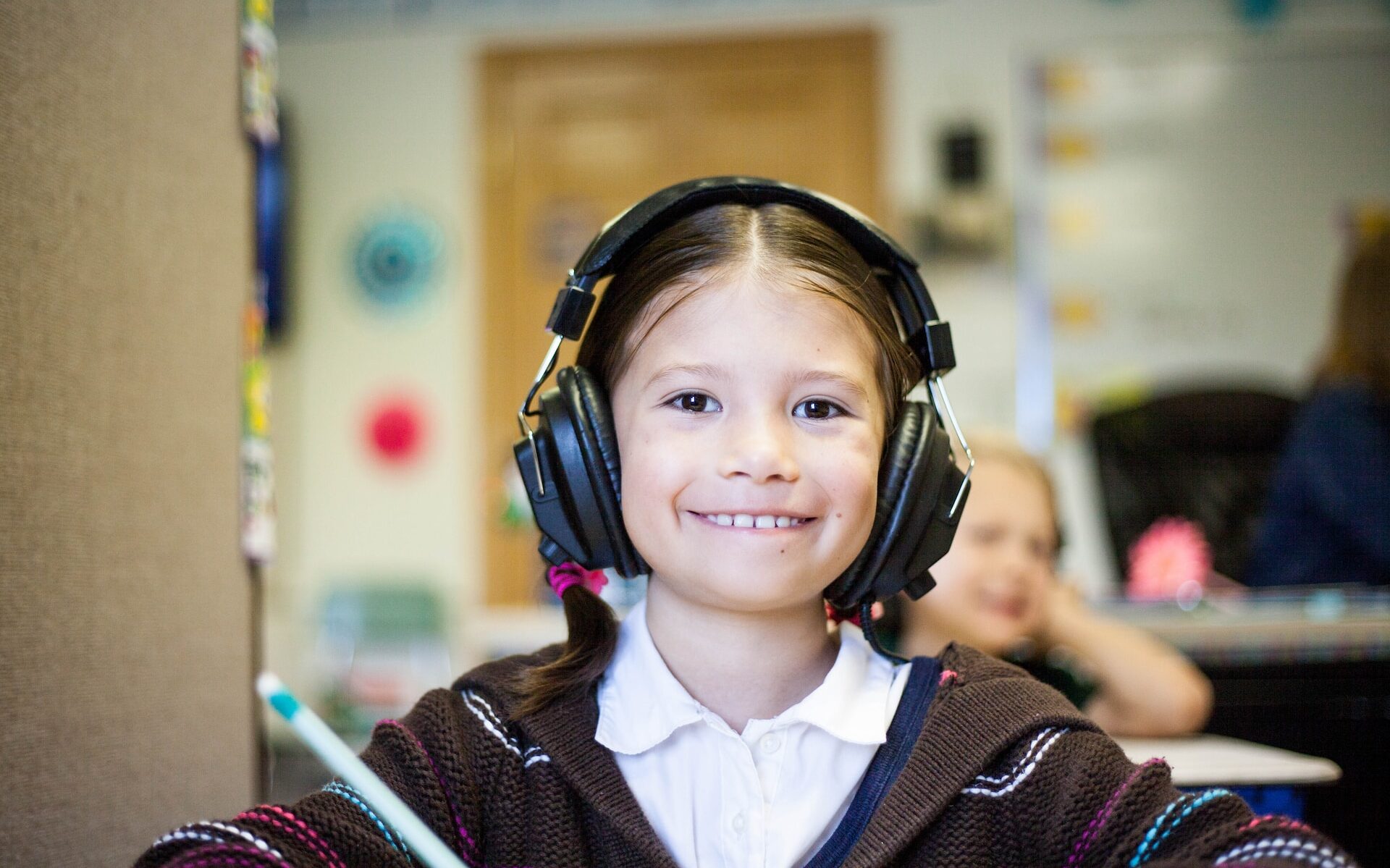
Persona 3: Children
“If I had my own country, everyone would be welcome, even refugees.”
Name: Isabella Hernández
Age: 11
Education: Attending primary school in Valencia, Spain
Hometown: Caracas, Venezuela
Family: Daughter of Luis Hernández
Occupation: Student
Goals: To adapt and thrive in her new environment, make friends, and excel in school despite the language barrier (classes are taught in a local language called Valencian) and cultural differences.
Frustrations: The sudden move to a new country has been challenging. Adjusting to a different culture, languages, and an unfamiliar educational system has posed initial struggles in school. She misses her friends and family back in Venezuela.
Brief story: Isabella was born in Venezuela, and moved to Spain with her parents. As a pre-teen, the transition has been challenging as she navigates cultural differences and attempts to integrate into a new school. Isabella longs to establish a sense of belonging in this foreign land.
Additionally, we designed a mobile artifact resembling a voting booth, used for a guerrilla survey that engaged over 600 individuals. This artifact was placed in various public and private venues across Valencia for a month and was implemented in three languages: Spanish, English, and Valencian. We also provided an online survey version. All of this aimed to assess people’s understanding of current guidelines around migration and to understand their frustrations, worries, and fears.

Constructing a mobile artifact resembling a voting booth
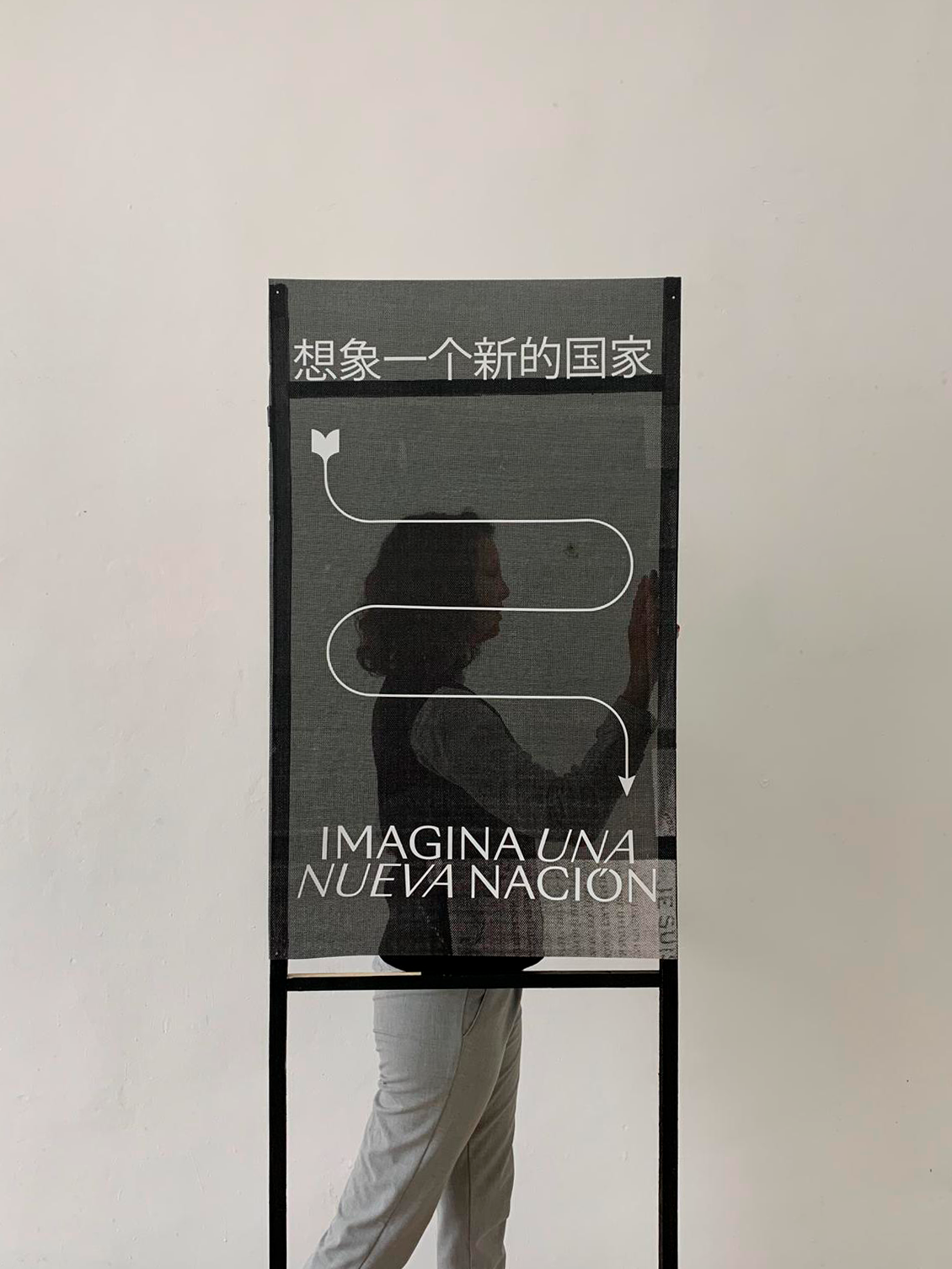
Surveys in the booth were available in three languages

Mother and daughter using the voting booth
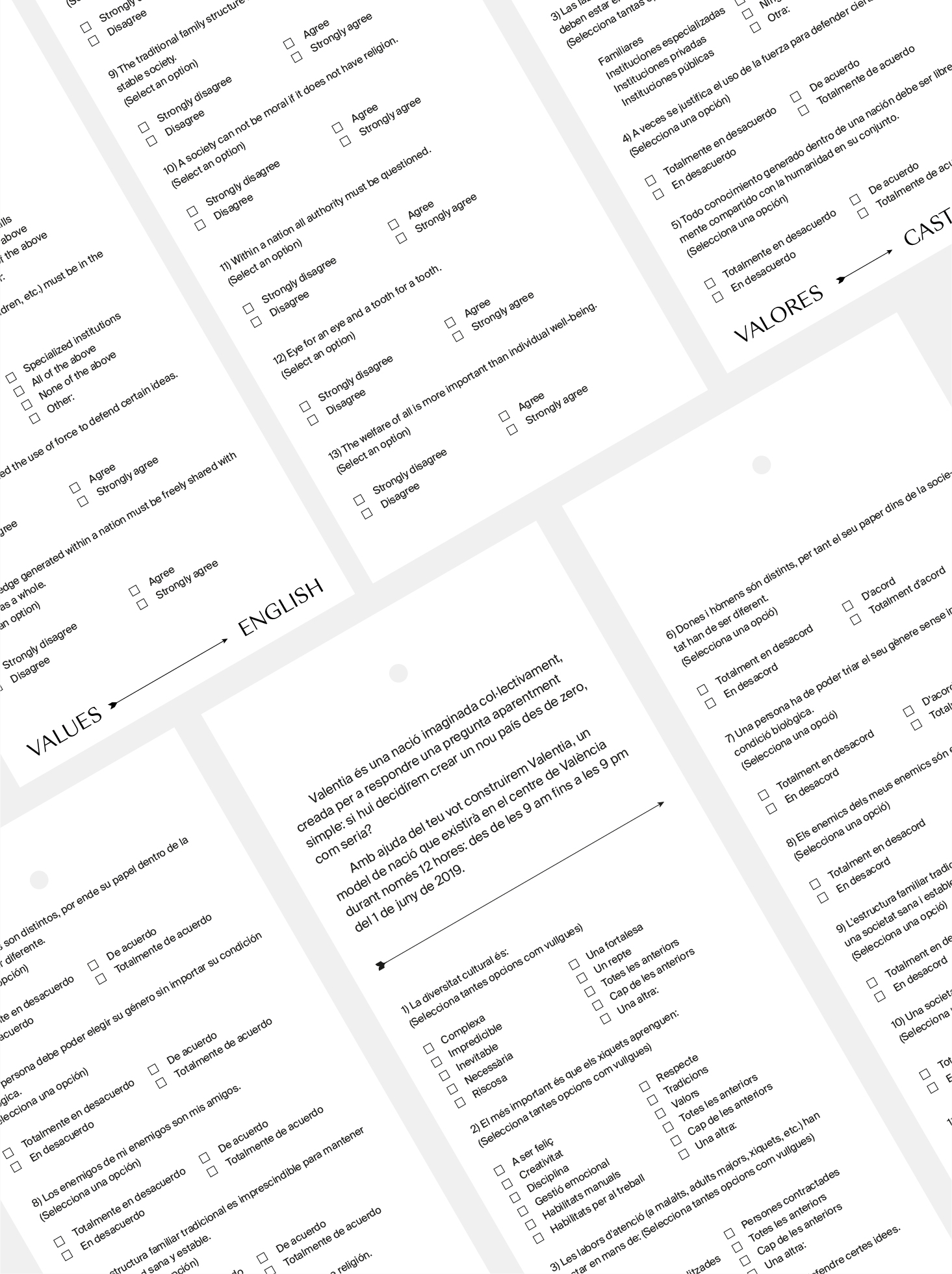
Illustration of the survey presented within the voting booth

Analyzing the survey during the analysis phase

Results graphically processed for clarity
Leveraging insights from our initial research, we crafted facilitation guides for various persona-specific workshops:
Persona 1: Locals
Workshop: The Art of Creating a Micronation
Involving 10 local residents and Polytechnic University of Valencia students, this workshop tackled fears around immigrants and tradition loss. Participants envisioned Valentia as an adaptable micronation, fostering experimental models open to replication anytime, anywhere.
Persona 2: Refugees
Workshop: Narratives for a New Nation
Conducted with the support of social workers and volunteers from the Intercultural Candombe Association, and the Commission for Aid to Refugees in the Valencian Country (CEAR), 30 refugees shared their migration traumas and feelings of estrangement. Their narratives shaped our micronation based on personal nationhood experiences. Their vision for Valentia centered on radical inclusivity.
Persona 3: Children
Workshop: Create Your Own Nation
Facilitated a workshop with 35 children aged 9 to 11 from a school with refugee students. The discussion involved challenges faced during forced relocations. Their collective vision for Valentia included numerous creative micronations, detailed in governance, organization, and neighbor relations.
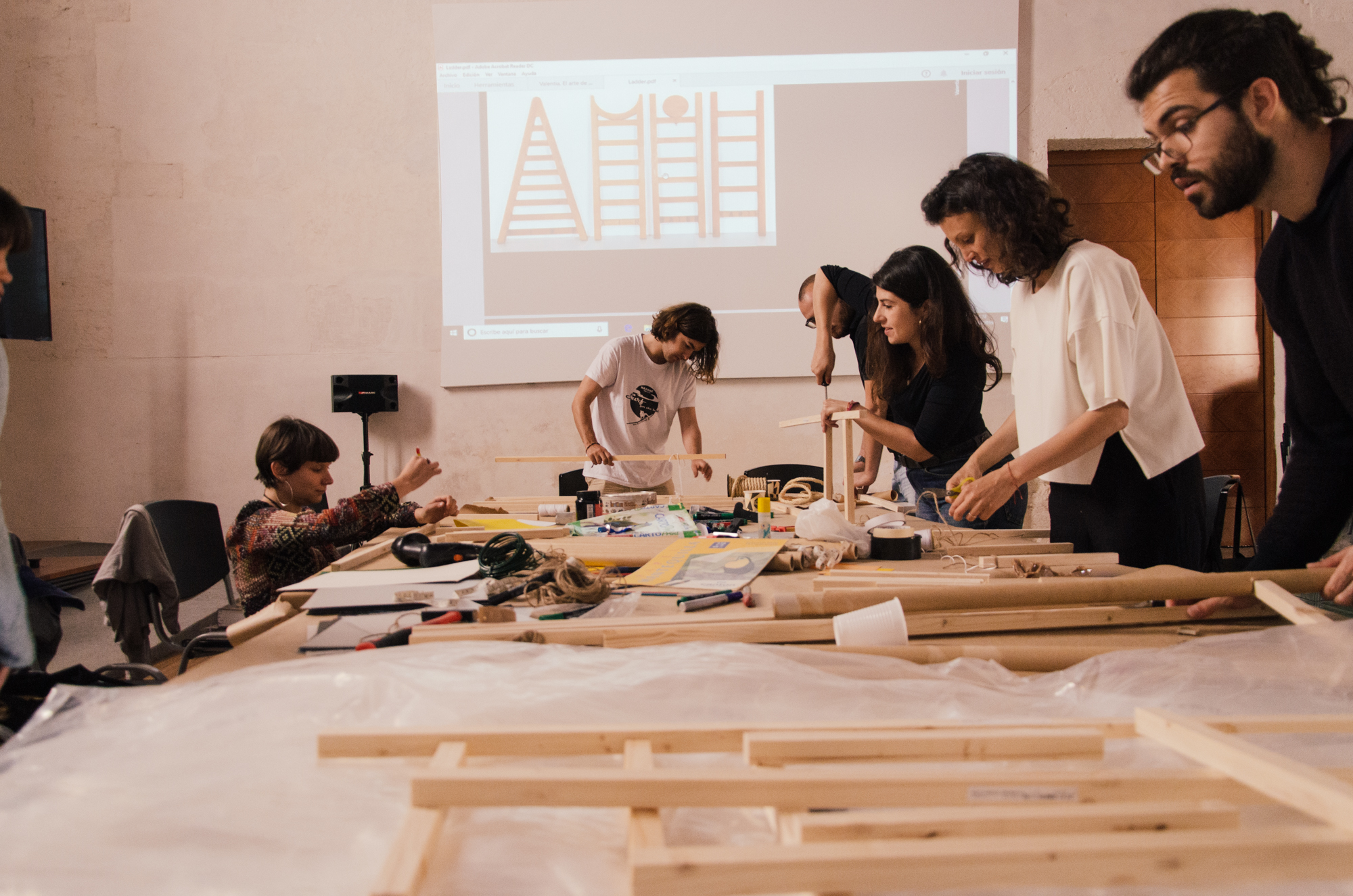
Workshop The Art of Creating a Micronation
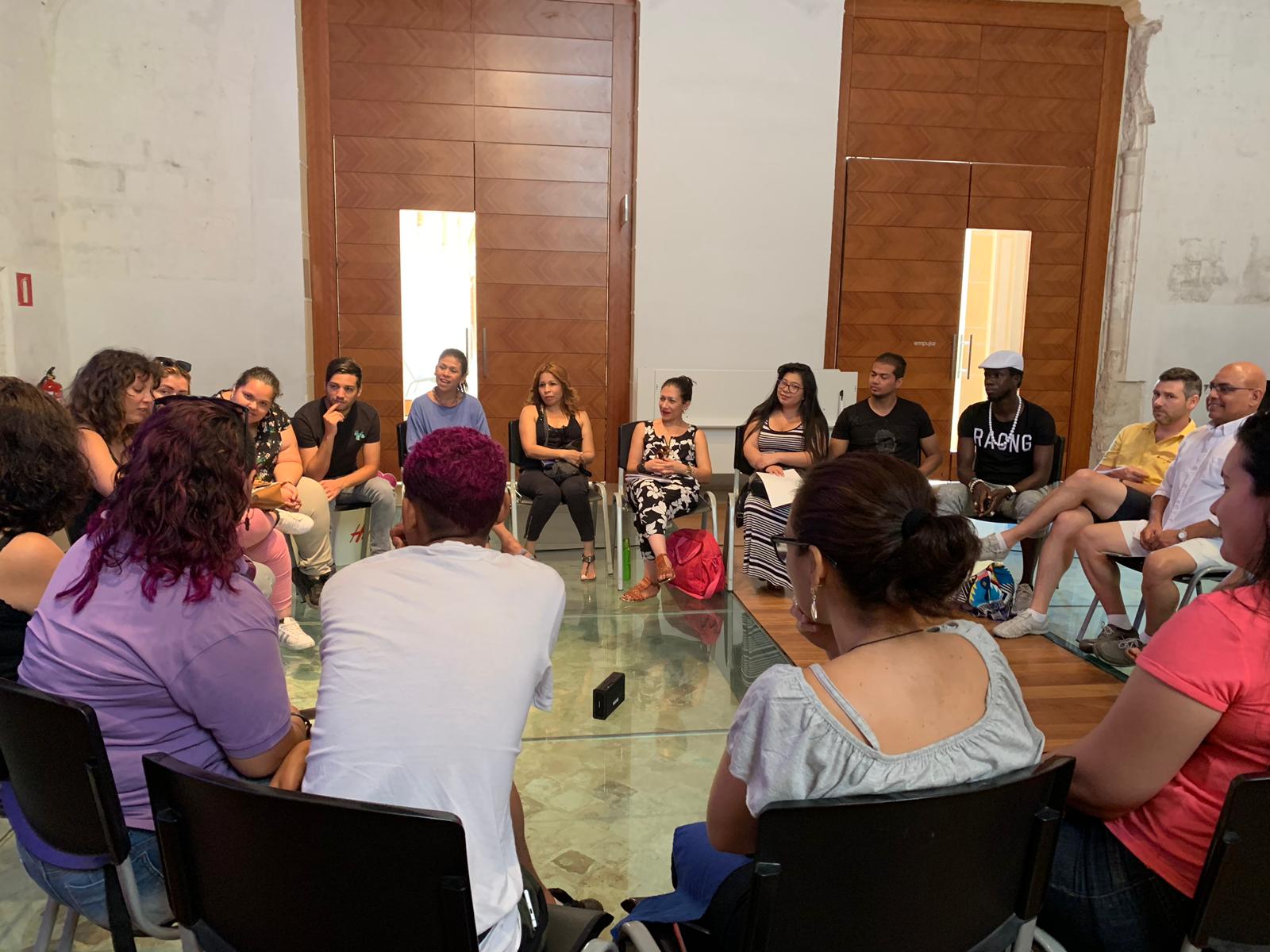
workshop Narratives for a New Nation
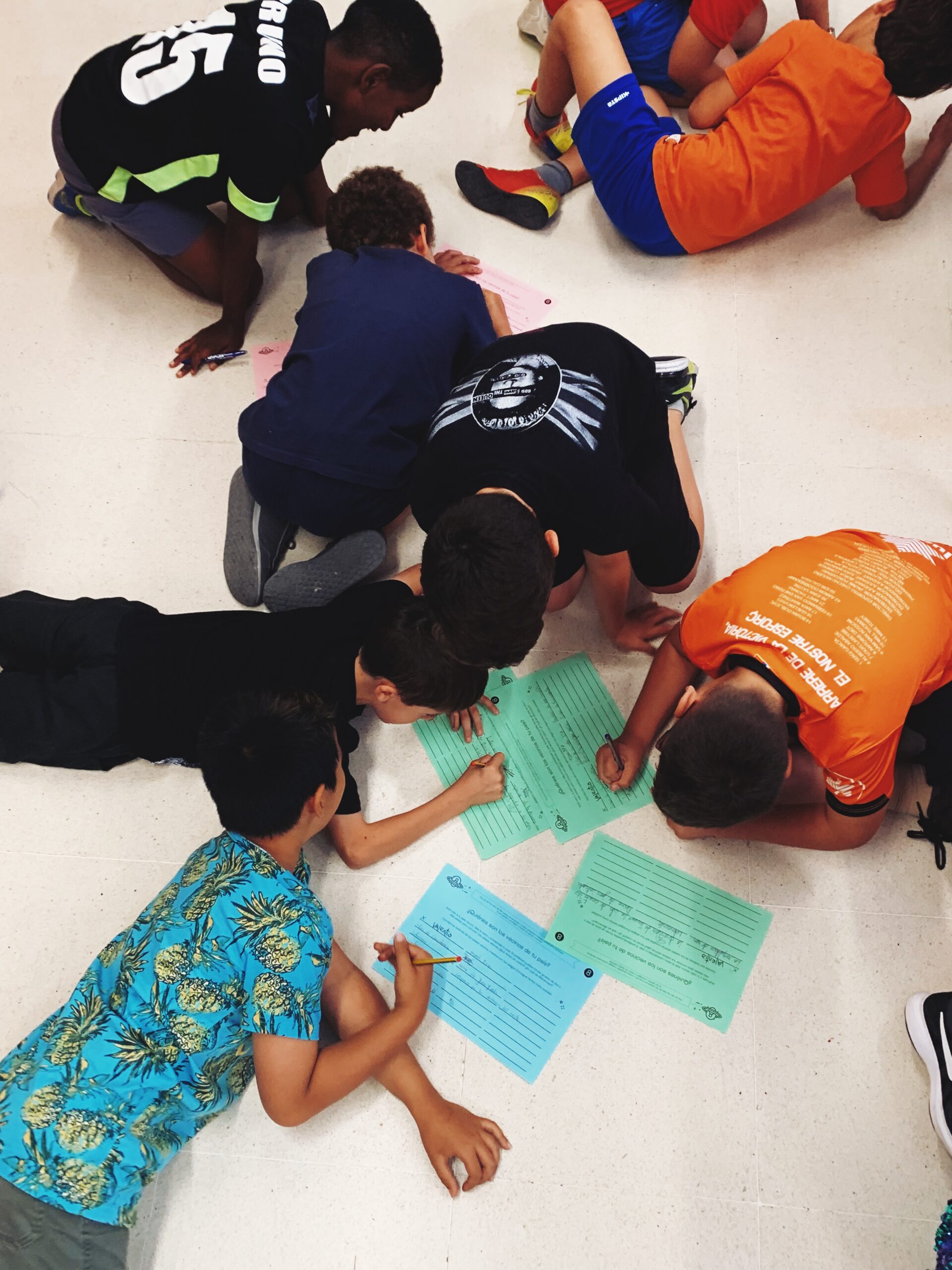
workshop Create Your Own Nation
The findings of our research were organized on an affinity map to better understand their relationships to each other and to determine priorities moving forward in the process. I synthesized these findings into three categories: lack of knowledge, feelings of fear, and lack of shared spaces. These categories shed light on three pain points.
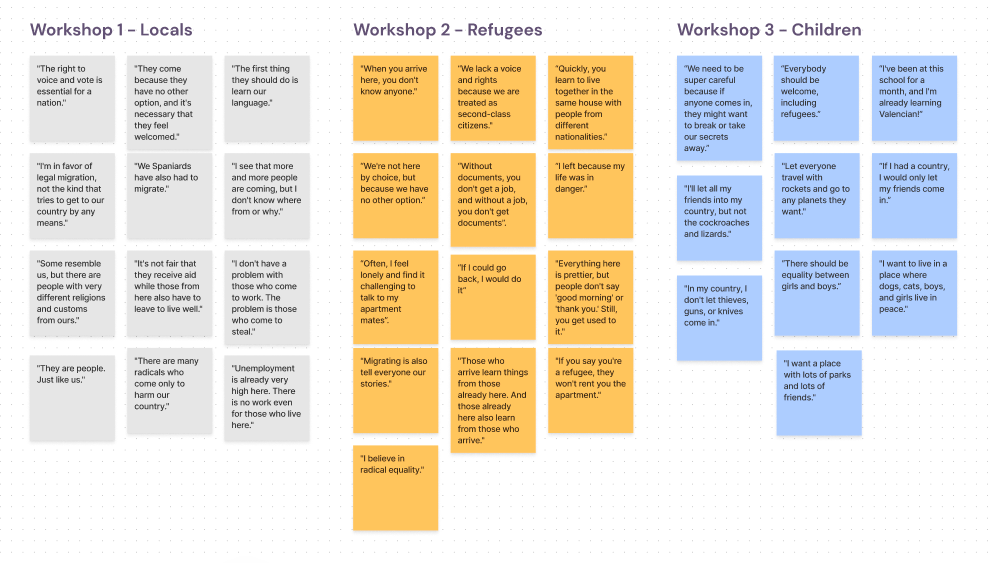
WorkshopS insights selection
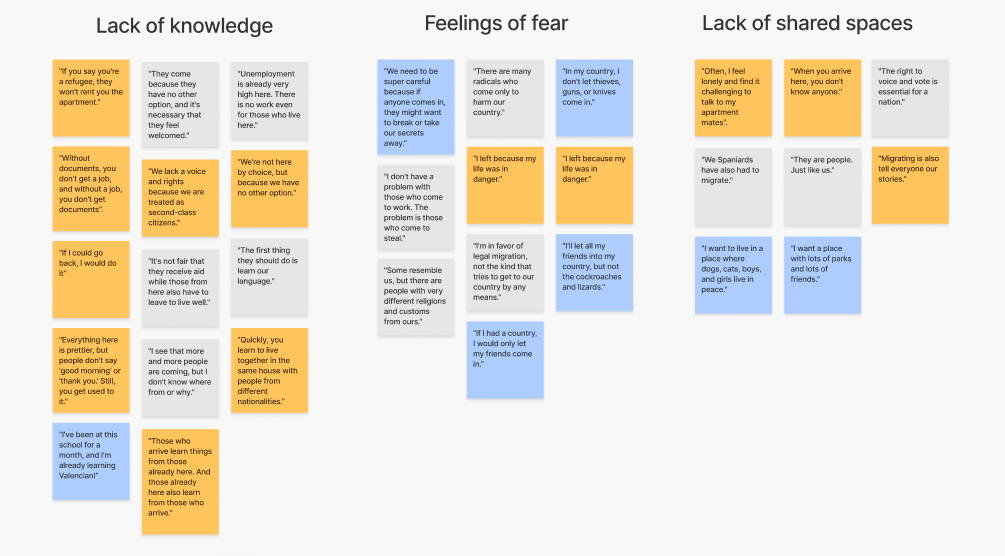
Final iteration of affinity map exploring patterns and pain points
2. Ideation & Prototyping
Based on the identified challenges, our focus shifted towards establishing a communal space fostering interaction between local residents and refugees, aiming to share mutual knowledge and alleviate prevailing feelings of apprehension. Initially, we designed a tangible installation-like prototype, extensively tested over a full day.
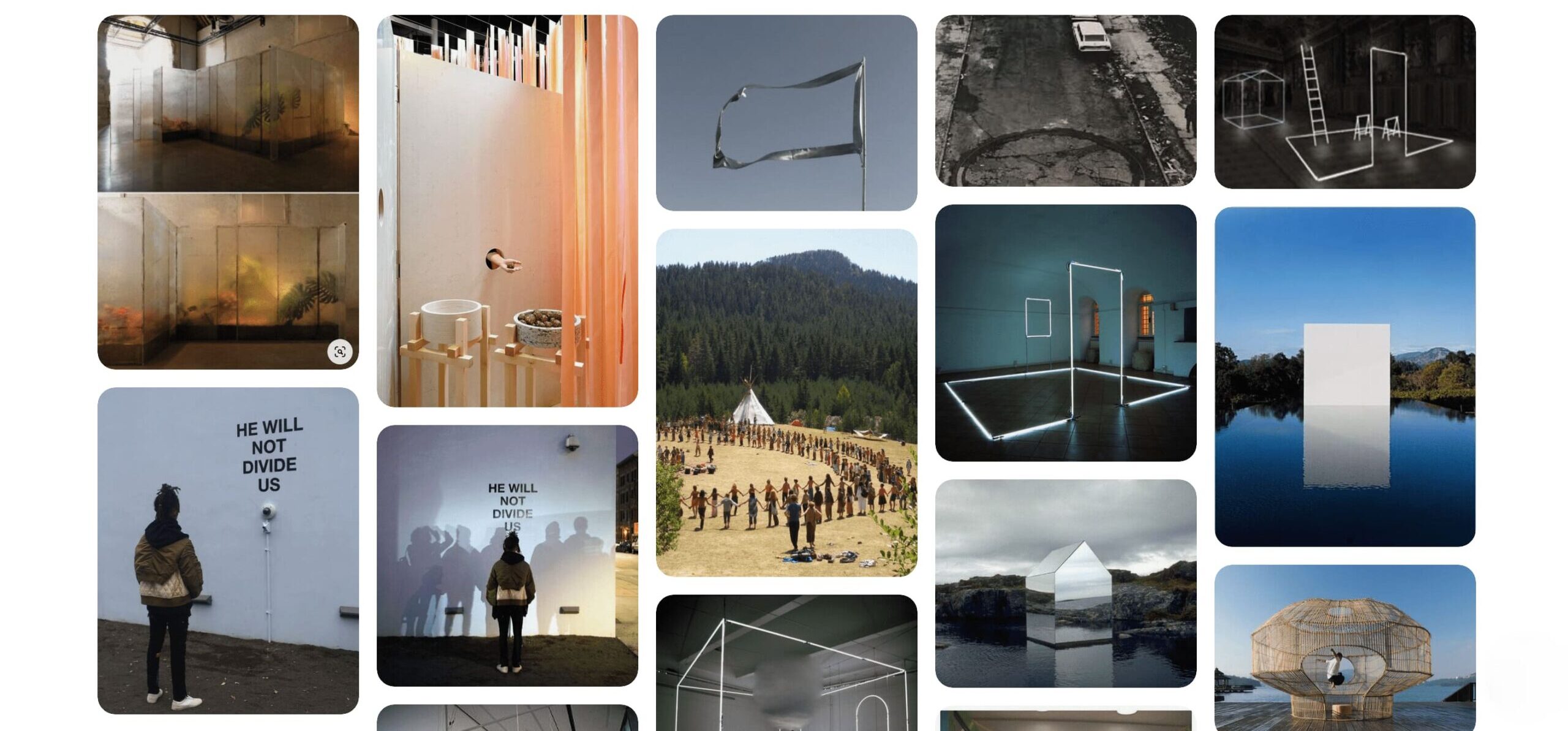
Fragment of Moodboard that inspired the development of our initial prototype
3. Testing & Validation
This initial prototype proved ineffective during testing as both local residents and refugees perceived it as intimidating due to its openness and lack of instructional guidance.
Consequently, we iterated on a new prototype, seeking to address the need for secure spaces for inclusive discussions and expression.
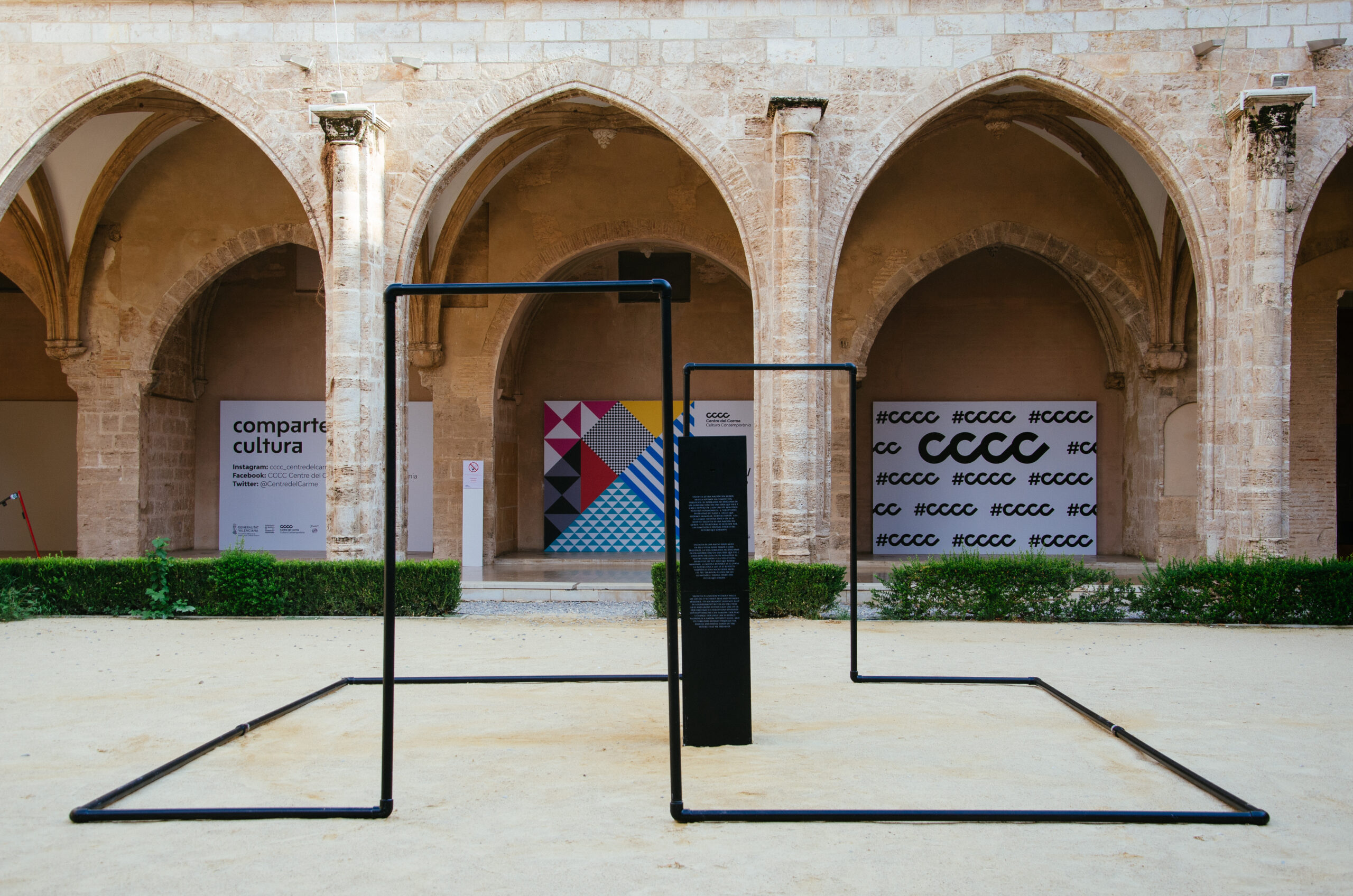
Initial prototype that proved ineffective
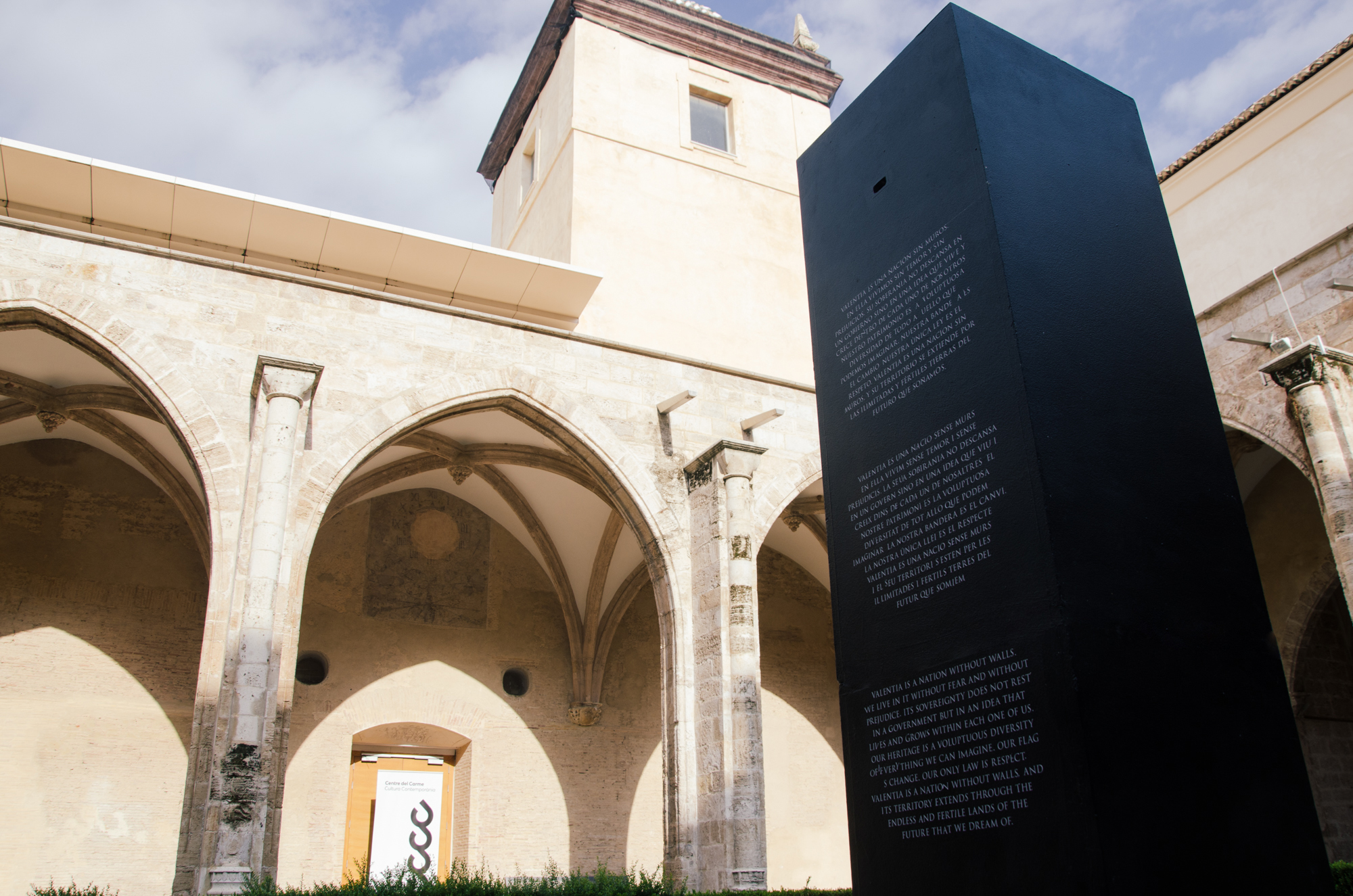
Detail of the totem located in the center of the first prototype
This revised concept materialized into a circular seating arrangement accompanied by a ‘talking stick’ method, enabling equitable opportunities for voice-sharing. The implementation of this secondary prototype facilitated a four-hour dialogue session where participants, regardless of their backgrounds, openly deliberated and exchanged perspectives. This collective engagement created an environment for diverse individuals, including immigrants, refugees, children, educators, social workers, and civil servants, to discuss the envisioned future for Valencia and beyond in an open and inclusive manner.

Circular seating arrangement of the second prototype
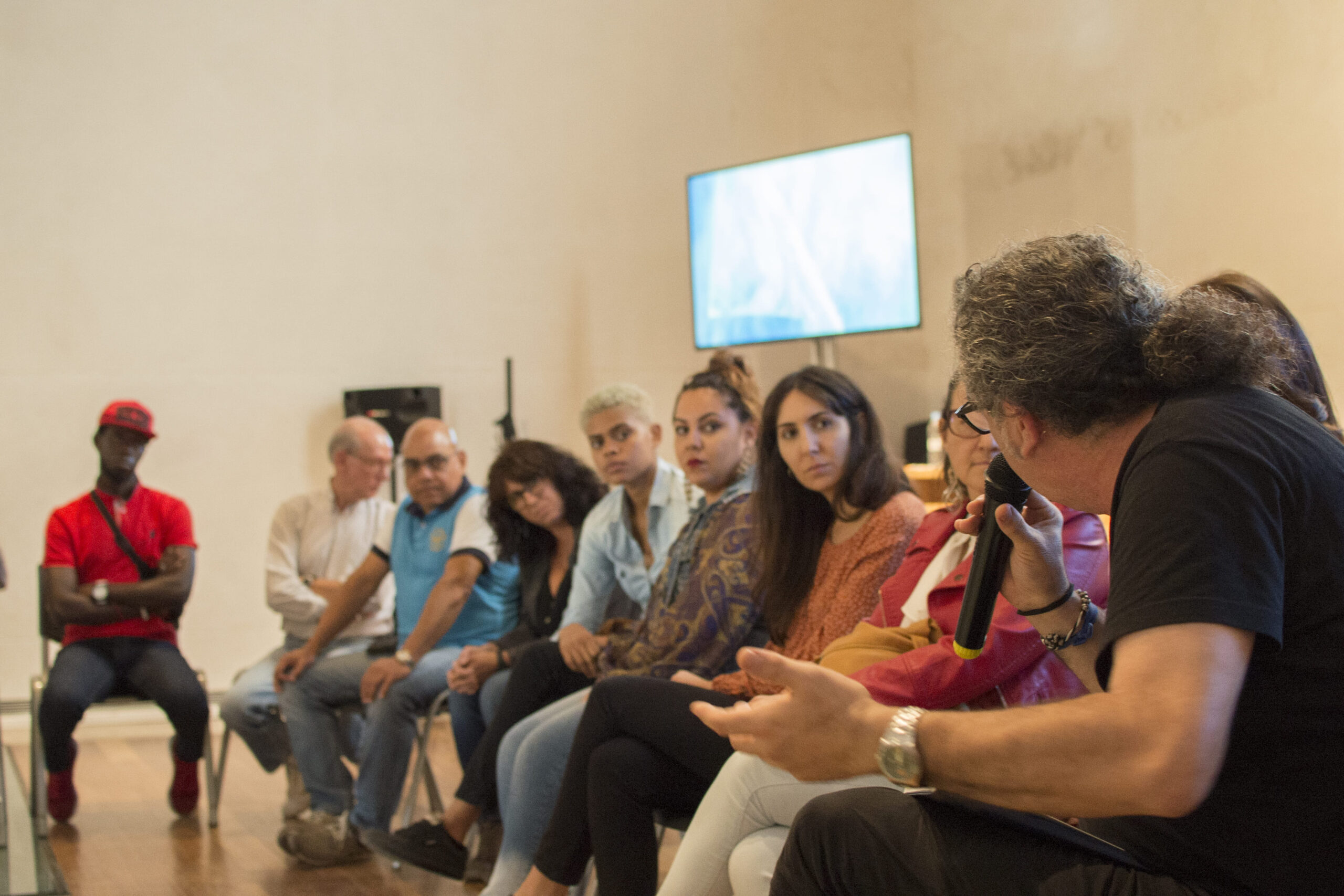
A microphone served as a ‘talking stick,’ ensuring fair voice-sharing opportunities
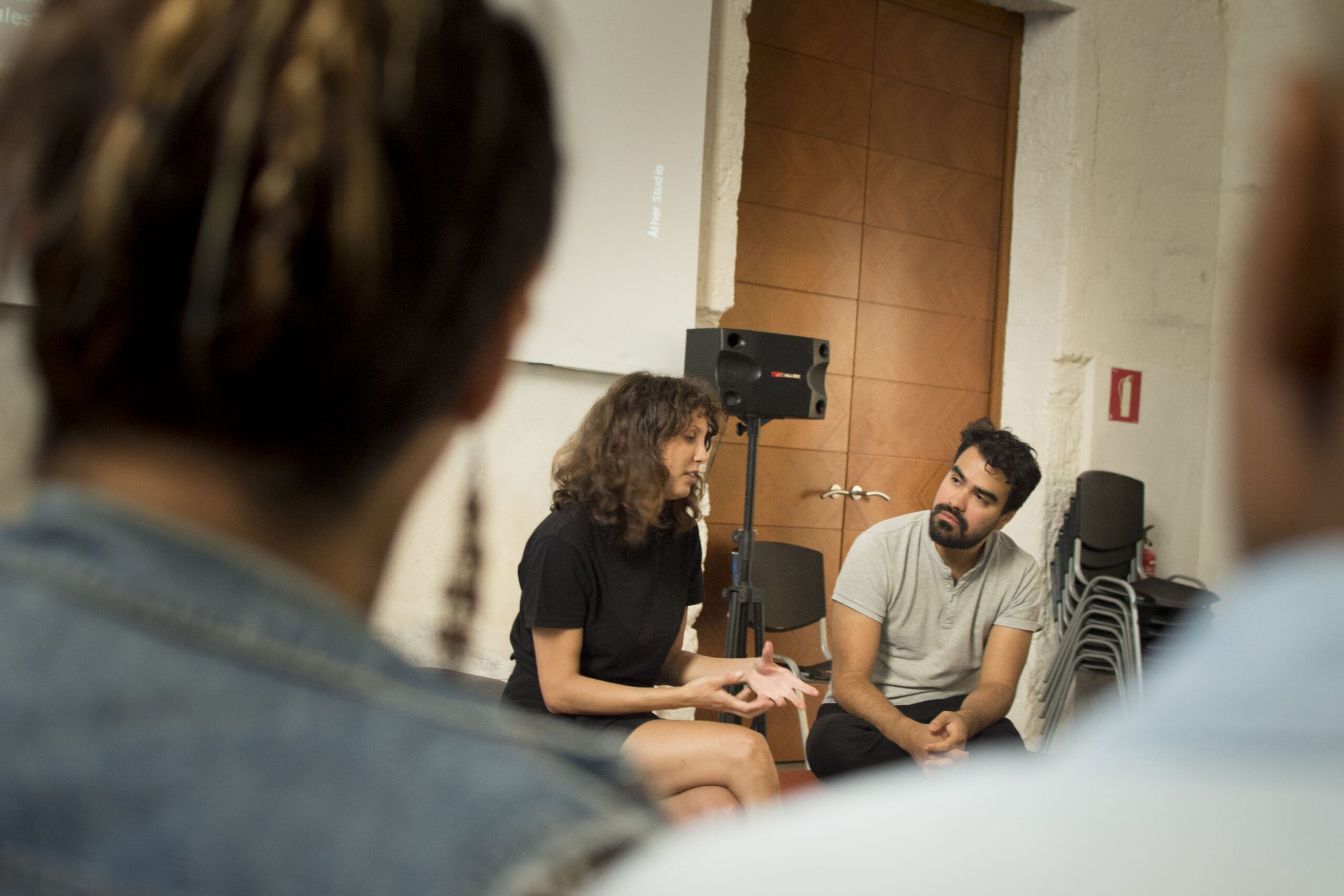
During the dialogue session, participants deliberated and exchanged perspectives
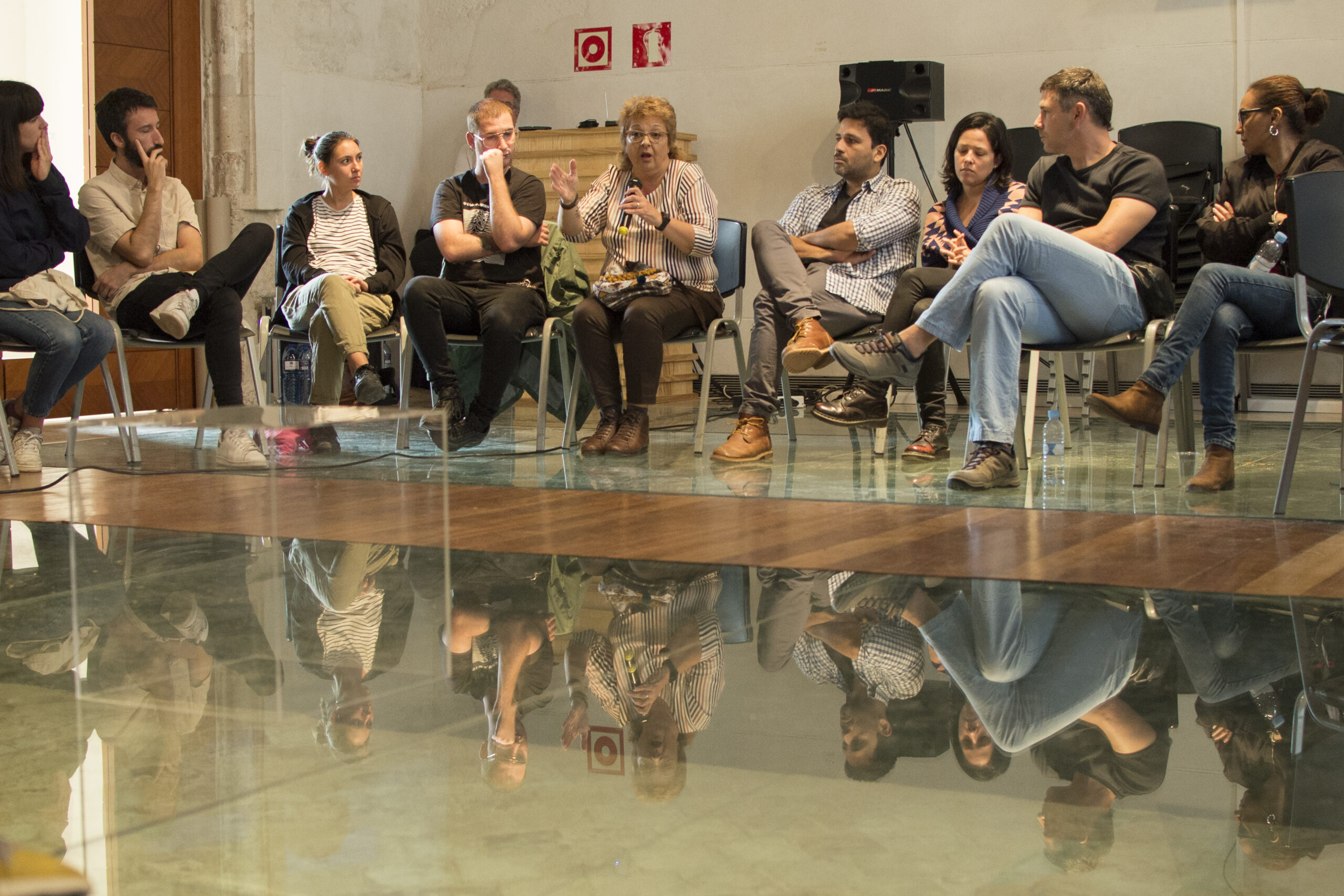
Diverse individuals discussed their visions for Valencia in an open and inclusive manner
5. Documentation & Reporting
We documented the complete research process and outcomes, encompassing insights, feedback, artifacts, strategies, and recommendations. All of this was consolidated into a comprehensive report that was submitted to the client.
Moreover, acknowledging the project’s distinctive speculative, reflective, and transient characteristics, we curated a publication titled “Postnations.” This compilation encapsulates the project’s crucial methodological aspects, serving as a do-it-yourself (DIY) guide for constructing speculative micronations similar to Valentia.

Front and back cover of the book ‘Postnaciones,’ written by Audrey Lingstuyl
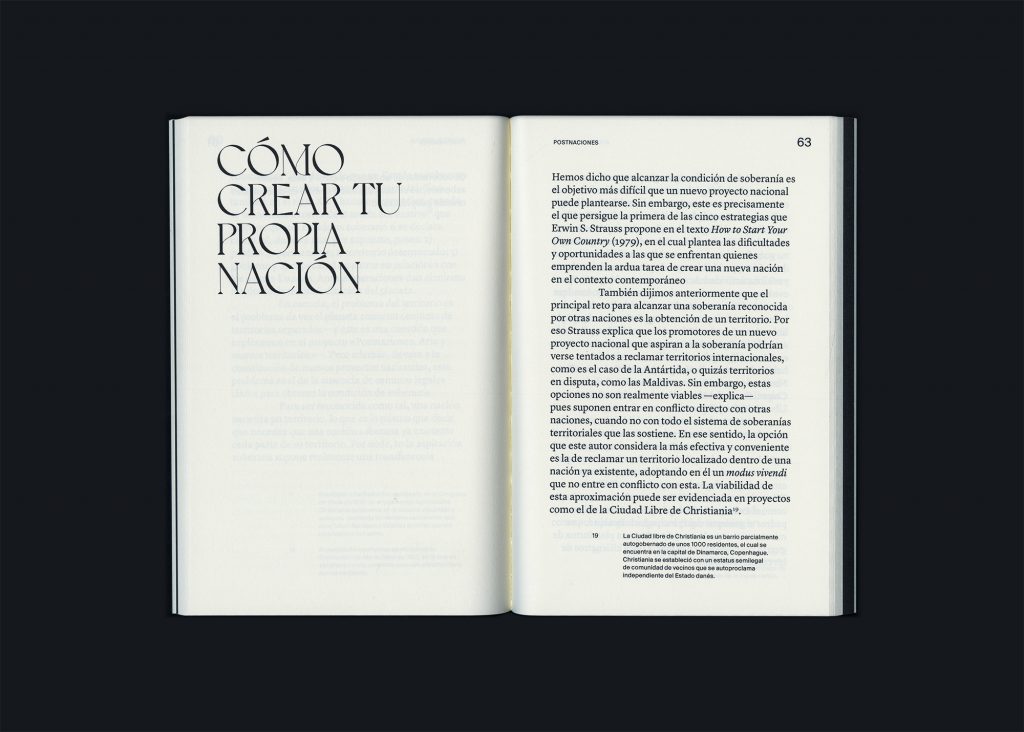
Inside of the book ‘Postnaciones,’ chapter How to create your own nation’
OUTCOMES
• In the project, over 200 individuals shared their perspectives, regardless of their backgrounds.
• Employing a design thinking approach in a cultural mediation project can pose challenges, particularly when addressing sensitive topics and working with individuals in vulnerable positions. Collaborating with experts such as social workers (for refugees) and teachers (for children) is crucial.
• Additionally, creating services and experiences for individuals in vulnerable situations carries significant responsibility. Prototyping and iterations, while fundamental phases in the design process, also warrant sensitivity, considering each iteration can profoundly impact lives.
CREDITS
Collaborators: Spanish Commission for Refugees (CEAR), Candombe Asociación Intercultural, Creixem al Carme, CEIP Santa Teresa.
Support: Consortium of Museums of the Valencian Community,Centre del Carme Cultura Contemporània.
All images are courtesy of Äther Studio and Centre del Carme Cultura Contemporània.
